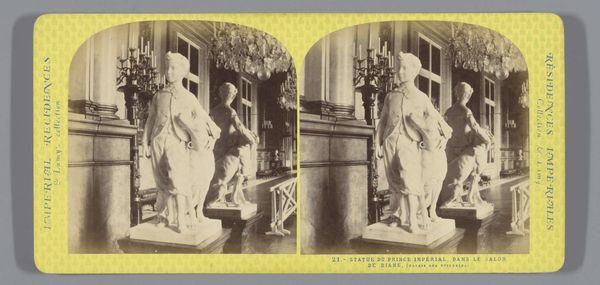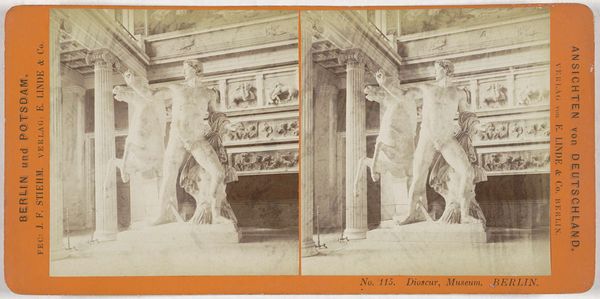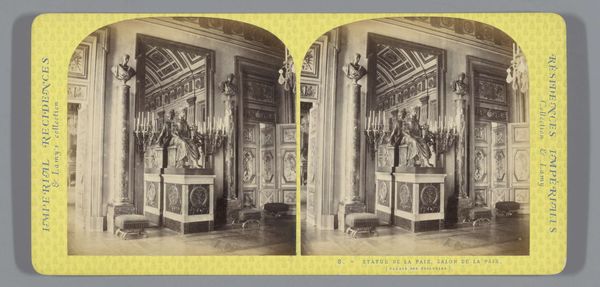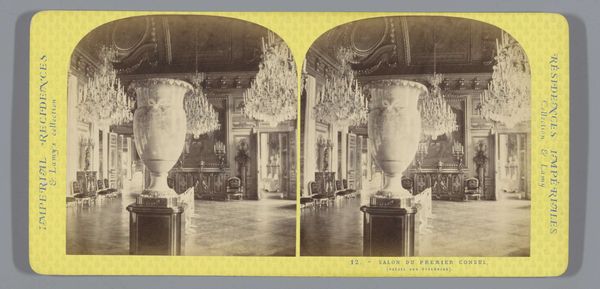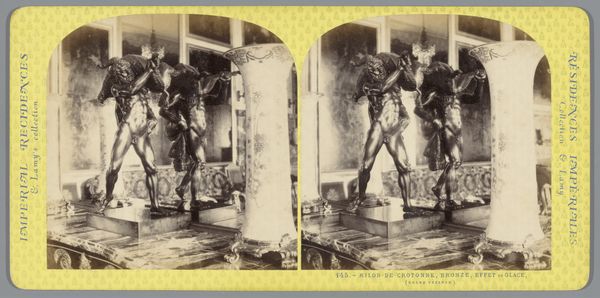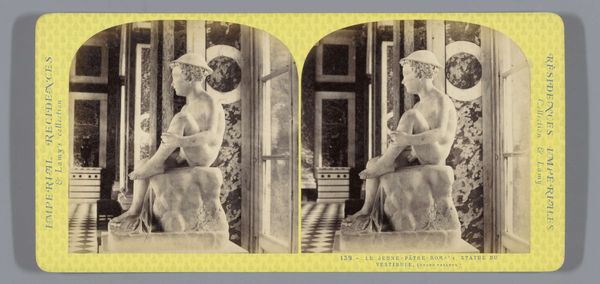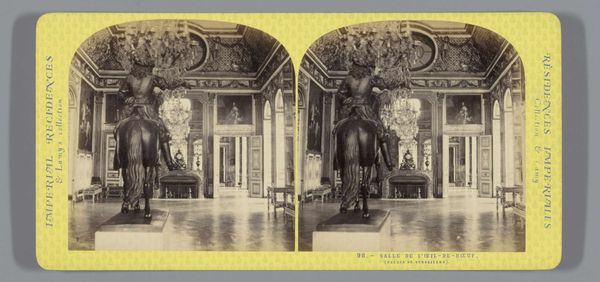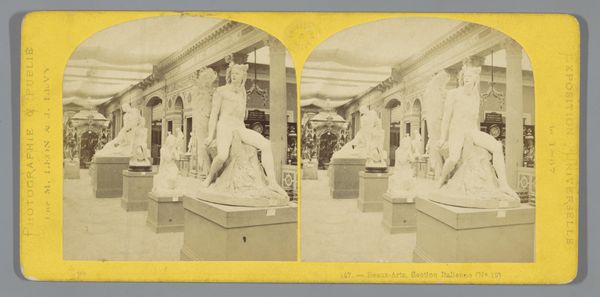
Bronzen beeld in het Grand Trianon, voorstellende een faun met een bok c. 1860 - 1880
0:00
0:00
bronze, photography, sculpture, gelatin-silver-print
#
classical-realism
#
bronze
#
photography
#
sculpture
#
gelatin-silver-print
#
realism
Dimensions: height 85 mm, width 170 mm
Copyright: Rijks Museum: Open Domain
Curator: This stereoscopic image presents a bronze sculpture, dating roughly between 1860 and 1880, depicting a faun carrying a kid. It was captured by Ernest Eléonor Pierre Lamy. Editor: My first thought? It's got a poignant, slightly burdened feeling. The strong faun, yes, but also that weight...the little goat seems more of a responsibility than a trophy. It almost has me wondering about that relationship. Curator: Lamy's photographic work gives insight to the sculpture itself, but consider too the labor of the bronze casting itself. Think of the foundries, the workshops, the economies supporting the creation and display of such pieces. It's industrial as well as artistic, showing social status. Editor: Absolutely, that contextual layering is essential. I do see how bronze in itself connotes wealth and power and that definitely informs the photo’s context within this opulent hall of mirrors in Grand Trianon! And looking at it from the viewpoint of photography as an emerging industry itself around that time? Layers, layers. I find myself empathizing a bit more with the faun – or rather, what he *represents* in this carefully constructed display of mastery. Curator: Right! These period photographs are objects too. Consider that gelatin-silver prints involved significant industrial production in photographic chemistry. Even a photograph signifies economic output as well as taste. It’s about more than classical themes. Editor: Which then comes around again to the sculpture's inherent classical roots, doesn’t it? How it connects or perhaps disguises the shifts in artistic output, cultural values with something recognizable – it’s a fascinating dance between ancient myth and modern industry. And perhaps that perceived weight is simply how these things coalesce at one point in time… or perhaps my mood this morning, I won’t deny! Curator: Precisely. It's that meeting point – between production and representation – which interests me. Editor: I concur, seeing those tension is what keeps art compelling. The eye finds the detail of course, but the mind creates narrative by understanding *why*.
Comments
No comments
Be the first to comment and join the conversation on the ultimate creative platform.
